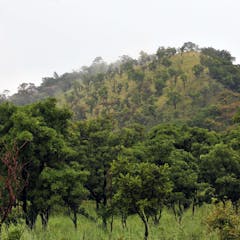
Articles on Tree cover
Displaying all articles

South Australia stands out as having the weakest tree-protection laws, but cities around the nation are losing tree cover at a time when climate change makes them more important than ever.

Plantations of exotic trees from the mid-19th century onwards devastated Indian ecosystems.

The Kenyan state has historically viewed forests in terms of production and economic development – not biodiversity and conservation.

Ghana’s government should shift to a community-based and voluntary approach to forest restoration and conservation

When the pandemic hit, green space was there for us at a time when others weren’t or couldn’t be. Urban greening might be the solution to the ‘lonelygenic environment’ that our cities have created.

Maintaining ecological balance in savannas is essential

Cave-specific conservation and protection actions are essential to protect cave habitats for the continued survival of bats, and ultimately, the well-being of humans.

Europe’s forests are growing, but tropical areas are losing tree cover at a massive scale due to EU demand for imported products. Here’s how to redress the imbalance.

A better understanding of the science behind falling trees – followed by informed action – will help keep us safe and ensure trees continue to provide their many benefits.

New research shows nature started its long road to recovery in 2020 – especially in NSW and Victoria. But overall conditions across large swathes of the country remain poor.

As our cities get hotter, rebuilding whole suburbs better suited to the heat is not an option. Instead, we can draw from the best examples of how to adapt neighbourhoods and behaviours.

Precautions must be taken to realise the full advantage of the benefits associated with trees.

Sleep might be a key factor in the link between greener neighbourhoods and better health. A new study shows living in an area with more tree canopy improves people’s odds of getting enough sleep.

Inner Melbourne alone has lost 2,000 street trees to major developments within a decade. Losing tree cover makes it even more difficult for our cities to cope with an increasingly tough climate.

Trees and the shade they provide are one of the best ways of cooling cities. But they also present challenges that are best resolved by managing this shared resource as part of an urban commons.

Greater urban density is making it harder to preserve, let alone increase, tree cover. It’s vital, then, to demonstrate the full value of green infrastructure for healthy liveable cities.

A new study shows major Australian cities are suffering an overall loss of green space –
although some areas are doing better than others.

If planning decisions properly considered the value of trees in a city, we could have a modern transport system and tree-lined views to enhance the journey.

Cities are aiming to increase their tree cover. But there will need to be more than trees to encourage wildlife to return.

Invasive pests threaten the world’s much-needed planted forests, as trees are declining.

